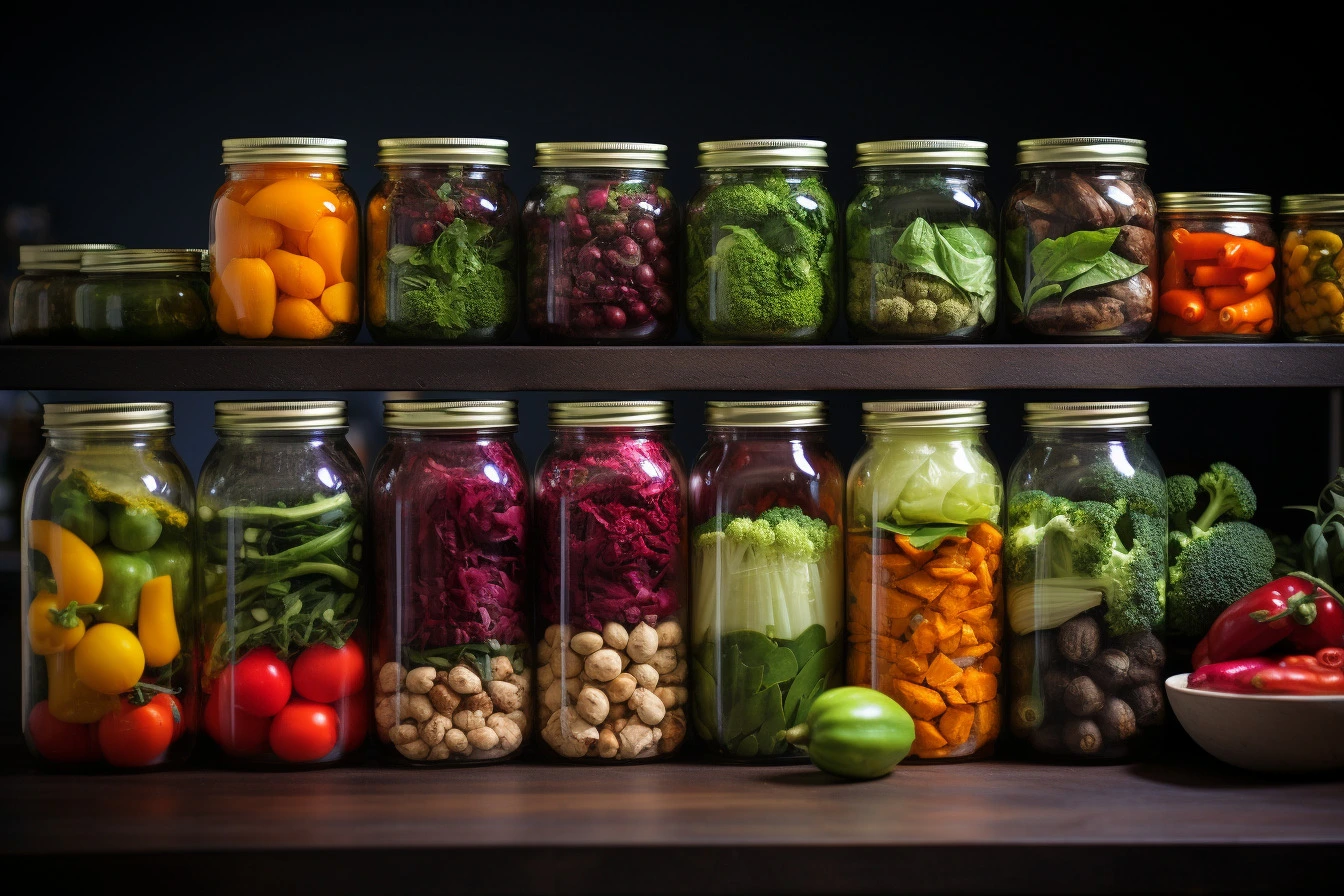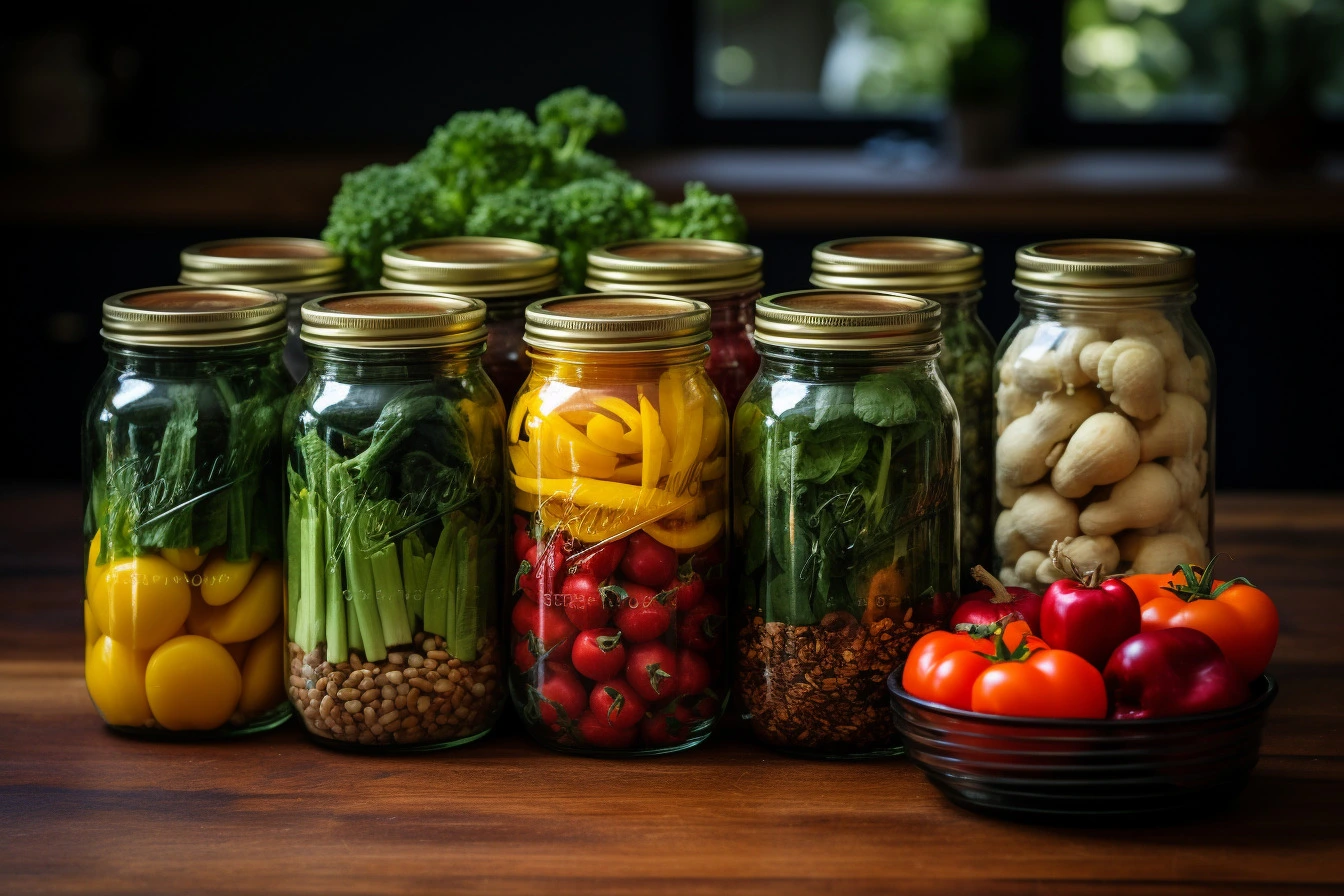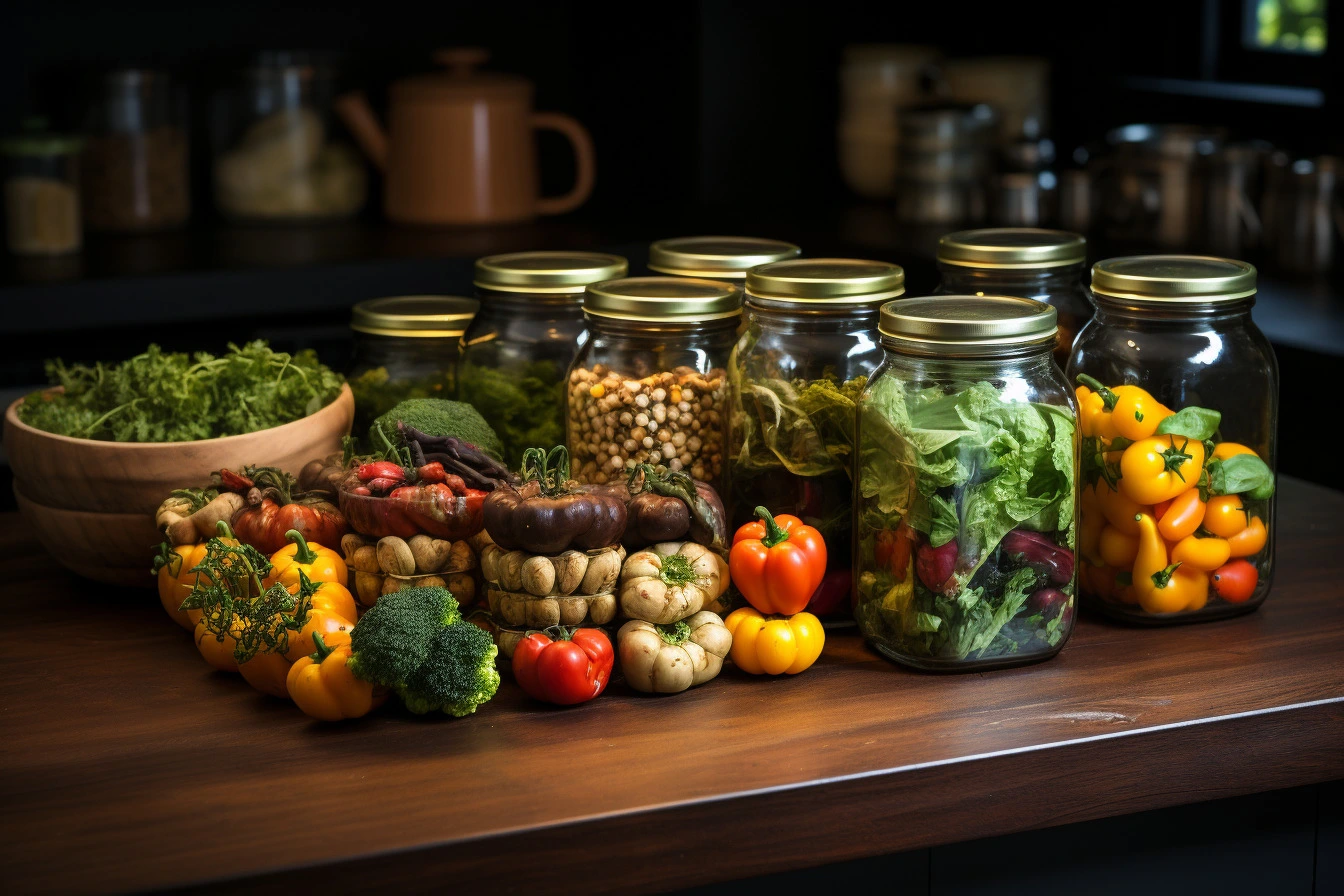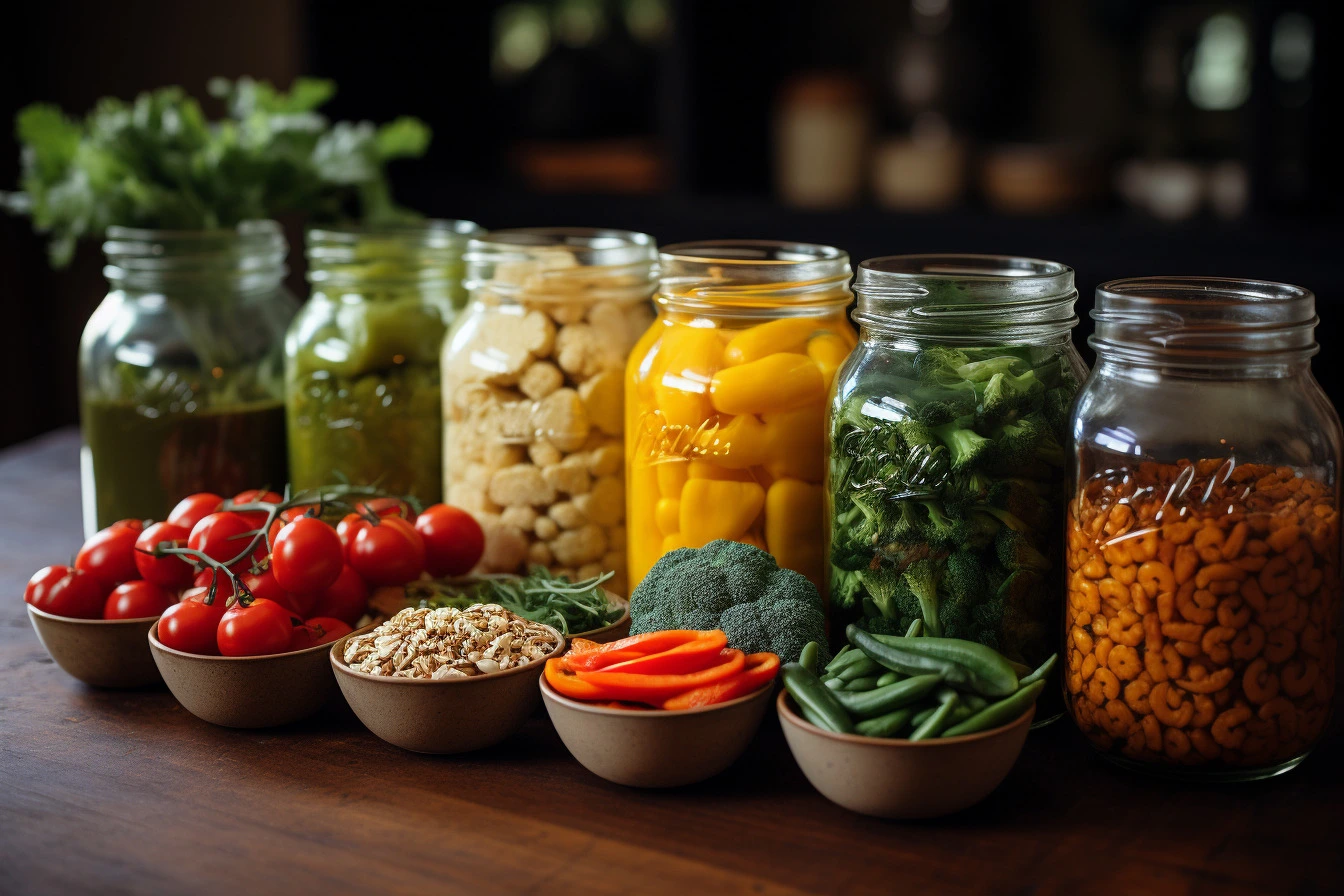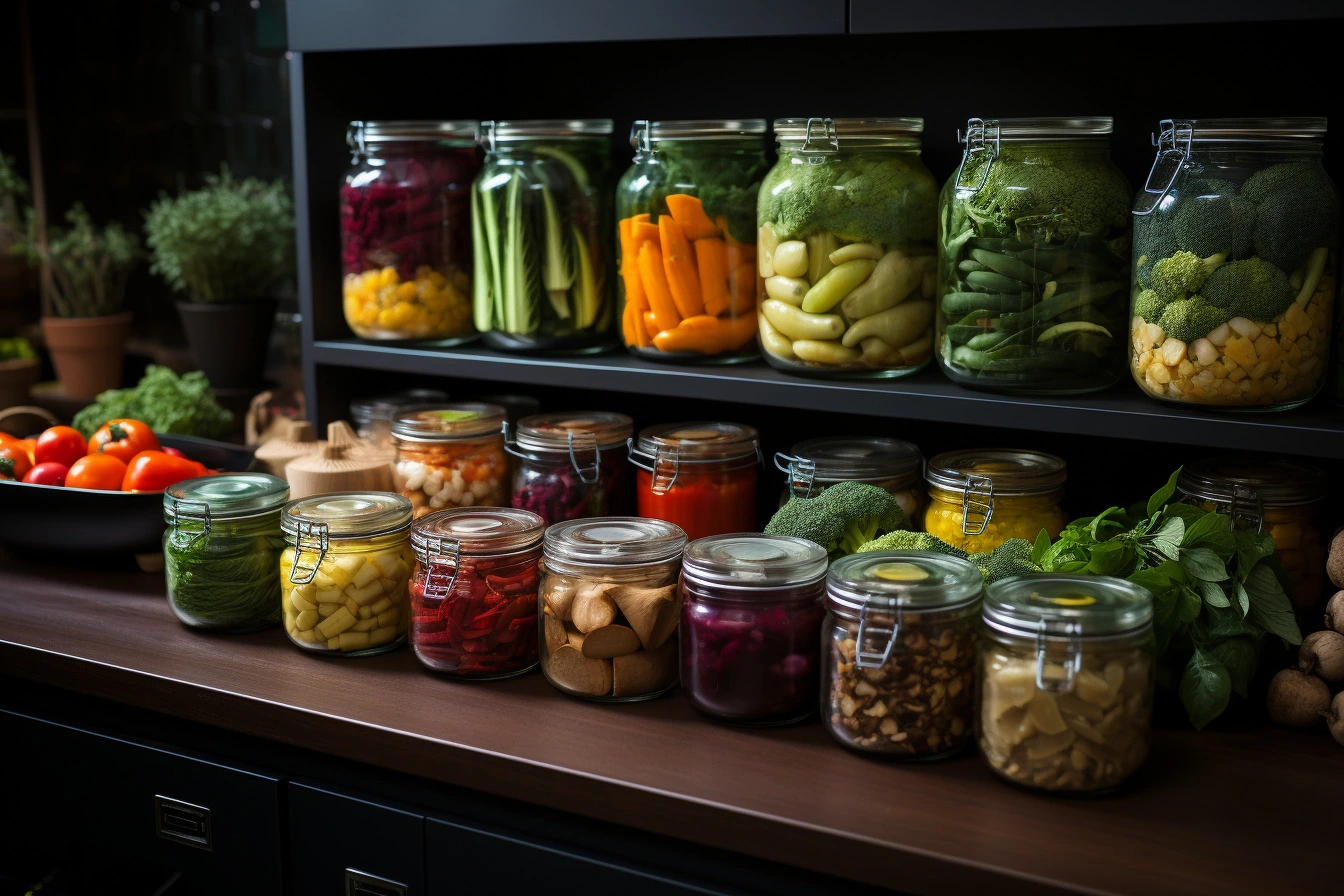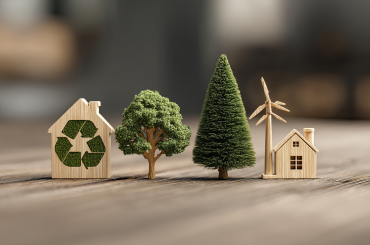Standing in my kitchen last Tuesday evening, staring at a fridge full of wilted vegetables and questioning my life choices, I had what can only be described as a come-to-Jesus moment about food waste. The bag of spinach I’d bought with the best intentions had turned into green sludge, three sad carrots were sprouting questionable growths, and half a cucumber had achieved that peculiar squishy texture that makes you wonder about the meaning of existence. This wasn’t just about wasted money—though at Bristol prices, that spinach cost more than my morning coffee—it was about the environmental hypocrisy of throwing away perfectly good food while writing articles about sustainability.
That moment sparked my journey into zero waste meal planning, which has completely transformed how I approach food shopping, cooking, and eating. What started as guilt-driven damage control has evolved into a genuinely satisfying system that saves money, reduces environmental impact, and actually makes cooking more creative and enjoyable. Plus, I no longer experience the weekly shame of conducting vegetable funeral services in my compost bin.
The learning curve was steep initially. My first attempt at zero food waste meal planning involved creating an elaborate spreadsheet that tracked every ingredient’s usage across multiple meals, which lasted exactly three days before I abandoned it as completely mental. The breakthrough came when I realized that effective meal planning isn’t about perfect systems—it’s about understanding your own eating patterns and working with them rather than against them.
Zero waste meal planning starts with honest self-assessment about your actual cooking habits. I had to admit that despite my best intentions, I rarely cooked elaborate meals on weekday evenings when I was tired and stressed. My fantasy cooking self bore no resemblance to my reality cooking self, who wanted simple, quick meals that didn’t generate washing up mountains. Once I accepted this truth, meal planning became much more realistic and effective.
The foundation of successful zero food waste meal planning is ingredient versatility. Instead of planning specific recipes, I learned to think in terms of flexible base ingredients that could be combined in different ways throughout the week. Onions, garlic, and ginger form the aromatic base for countless dishes. Eggs can become breakfast, lunch, or dinner depending on preparation. Grains like rice and quinoa stretch vegetables into satisfying meals while lasting weeks in storage.
Shopping strategy evolved to support zero waste goals. I stopped browsing supermarket aisles hoping for inspiration and started shopping with specific ingredient lists based on planned meals. Farmers markets became essential for buying exact quantities rather than predetermined package sizes. Bulk bins allowed purchasing precise amounts of grains, legumes, and spices without excess packaging. My shopping basket transformed from random impulse purchases to carefully chosen components of a weekly meal system.
The inventory system developed naturally from needing to track what ingredients required using up first. Every Sunday, I conduct a fridge audit to identify vegetables that need immediate attention, check pantry items approaching expiration dates, and assess frozen goods that have been languishing too long. This audit informs the coming week’s meal plan, ensuring older ingredients get prioritized over fresh purchases.
Batch cooking became essential for managing perishable ingredients efficiently. Sunday afternoons now involve preparing large quantities of versatile base components—roasted vegetables, cooked grains, basic sauces, and soup stocks. These elements can be combined differently throughout the week to create varied meals without requiring daily cooking from scratch. A large pot of rice might become fried rice on Monday, grain bowls on Wednesday, and soup base on Friday.
Zero food waste meal planning requires flexibility and creativity when ingredients don’t behave as expected. When vegetables start showing age, they can be transformed into soups, smoothies, or quick stir-fries. Overripe fruit becomes compotes, smoothies, or baked goods. Stale bread resurrects as breadcrumbs, croutons, or French toast. Every ingredient has multiple potential destinies rather than just one prescribed use.
The herb and spice strategy prevents waste from small-quantity ingredients that often spoil before full usage. Fresh herbs get chopped and frozen in ice cube trays with olive oil for easy seasoning additions. Herb stems add flavor to stocks before composting. Large quantities of seasonal herbs become pestos or herb salts that preserve flavors for months. Even wilted herbs can be rescued in cooked dishes where texture matters less than flavor.
Leftover integration became an art form rather than an afterthought. Roasted vegetables from Sunday dinner become grain bowl toppings, soup ingredients, or omelet fillings during the week. Cooking extra protein means lunch salads require minimal additional preparation. Rice deliberately cooked in excess becomes fried rice later in the week. Each meal gets planned with its potential second life in mind.
Storage optimization plays a crucial role in zero waste meal planning success. Glass containers replaced plastic throughout my kitchen for better visibility and food preservation. Proper storage techniques extend ingredient life significantly—herbs wrapped in damp towels, vegetables stored at optimal temperatures, grains kept in airtight containers. Understanding which foods store well where prevents premature spoilage from incorrect placement.
The meal rhythm established naturally once I stopped fighting my actual preferences. Breakfasts remained simple—usually variations on eggs, grains, or smoothies using ingredients that needed finishing. Lunches became opportunity meals for using leftover components in new combinations. Dinners focused on one-pot dishes that incorporated multiple vegetables and generated minimal washing up. This pattern worked with my energy levels rather than against them.
Seasonal adaptation keeps zero waste meal planning interesting throughout the year. Summer abundance requires preservation strategies—blanching and freezing excess vegetables, making large batches of tomato sauce, fermenting surplus produce. Winter planning emphasizes hearty, warming meals using stored and preserved ingredients. Spring brings delicate vegetables requiring gentle handling and quick consumption. Autumn delivers storage crops that form winter meal foundations.
The environmental impact reduction became measurably significant once zero food waste meal planning became habitual. My household food waste dropped from roughly two bags weekly to perhaps a handful of genuine scraps monthly. Shopping decreased from multiple weekly trips to one planned excursion plus occasional fresh ingredient top-ups. Energy usage reduced through batch cooking and strategic leftover utilization.
Community connections developed around zero waste principles. Friends started asking for meal planning advice and leftover transformation ideas. I organized a sustainable meal prep workshop where participants shared techniques for ingredient usage and waste reduction. Local farmers appreciated customers who bought exactly what they needed rather than predetermined quantities that might create waste.
The financial benefits accumulated gradually but significantly. Eliminating food waste meant every grocery purchase provided actual value rather than partial value. Buying ingredients systematically reduced impulse purchases and duplicate items. Planning meals around seasonal abundance meant paying lower prices for better quality produce. The money previously lost to spoiled food now funds higher quality ingredients or occasional treats.
Kitchen confidence grew alongside zero waste skills. Understanding ingredient versatility made improvising meals easier when plans changed. Developing rescue techniques for aging vegetables expanded cooking repertoire. Learning proper storage methods improved overall food quality. The kitchen transformed from a source of waste anxiety to a creative space for resourceful cooking.
Zero food waste meal planning extends beyond just preventing spoilage to encompass thoughtful consumption patterns. Portion planning prevents cooking excessive quantities that become monotonous leftovers. Ingredient coordination ensures complementary flavors and textures across weekly meals. Nutritional balance happens naturally when diverse vegetables form meal foundations rather than afterthoughts.
The preservation skills developed through zero waste commitment connect modern meal planning to traditional food wisdom. Learning to ferment vegetables, dehydrate surplus produce, and properly freeze prepared foods provides security against seasonal scarcity. These techniques transform potential waste into long-term food storage while developing valuable self-sufficiency skills.
Looking back on eighteen months of systematic zero waste meal planning, the transformation extends far beyond just reducing food waste. My relationship with cooking has become more intentional and creative. Shopping feels purposeful rather than overwhelming. Eating provides satisfaction beyond just nutrition—there’s genuine pleasure in knowing nothing edible gets wasted and every meal represents thoughtful resource usage.
The ripple effects continue expanding as zero waste principles influence other household decisions. Zero waste kitchen practices extended to packaging reduction, reusable container usage, and energy conservation. Friends and family gradually adopted similar approaches after witnessing practical benefits. The personal food system became a demonstration of how individual choices can create meaningful environmental impact.
Current zero waste meal planning routine feels sustainable in every sense—environmentally beneficial, financially sound, and personally satisfying. The weekly rhythm of planning, shopping, preparing, and creatively using ingredients has become genuinely enjoyable rather than dutiful. What began as guilt about wasted vegetables has evolved into a comprehensive approach to thoughtful eating that aligns with environmental values while improving daily life quality.
The key insight from this journey is that zero food waste meal planning succeeds when it works with your actual lifestyle rather than against it. Perfect systems matter less than consistent habits that gradually reduce waste while maintaining eating enjoyment. Starting small with ingredient awareness and building toward comprehensive planning prevents overwhelm while creating lasting change.
My kitchen transformation proves that individual food choices can create measurable environmental benefits without sacrificing convenience or satisfaction. Every meal planned thoughtfully, every ingredient used completely, and every potential waste item rescued contributes to a more sustainable food system. Zero waste meal planning isn’t about perfection—it’s about progress toward more conscious consumption that benefits both personal wellbeing and environmental health.
The journey continues evolving as I discover new preservation techniques, seasonal recipes, and creative approaches to ingredient utilization. Each week brings opportunities to refine the system and experiment with different strategies. What started as embarrassment about vegetable waste has become a genuinely rewarding practice that demonstrates how sustainable living can improve rather than complicate daily routines when approached thoughtfully and realistically.
